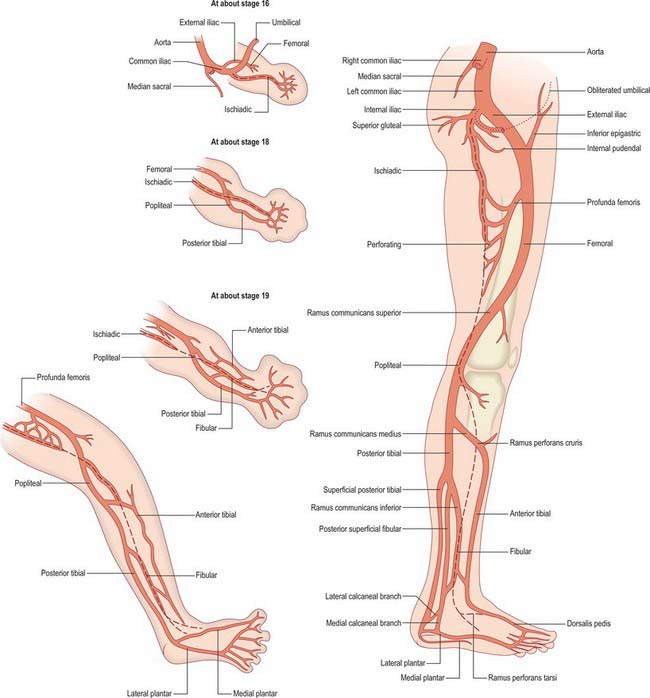CHAPTER 85 Development of the pelvic girdle and lower limb
STAGES OF LOWER LIMB DEVELOPMENT
VESSELS IN THE LOWER LIMB
The axial artery of the lower limb arises from the dorsal root of the umbilical artery and courses along the dorsal surface of the thigh, knee and leg (Fig. 85.1). Below the knee it lies between the tibia and popliteus, and in the leg it lies between the crural interosseous membrane and tibialis posterior. It gives off a perforating artery that traverses the sinal tarsus to form a dorsal network and ends distally in a plantar network. The femoral artery passes along the ventral surface of the thigh, opening a new channel to the lower limb. It arises from a capillary plexus that is connected proximally with the femoral branches of the external iliac artery and distally with the axis artery. At the proximal border of popliteus the axis artery splits into primitive posterior tibial and fibular branches which run distally on the dorsal surface of popliteus and tibialis posterior to gain the sole of the foot. At the distal border of popliteus the axis artery gives off a perforating branch which passes ventrally between the tibia and the fibula and then courses to the dorsum of the foot, forming the anterior tibial and dorsalis pedis arteries. The primitive fibular artery communicates with the axis artery at the distal border of popliteus and in its course in the leg.








